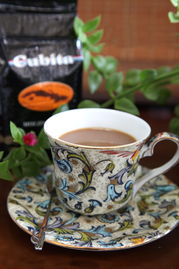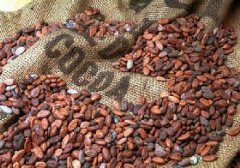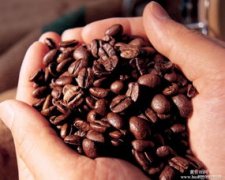The three finest coffees in the world worth tasting
Cubita Coffee(Hu Jue Coffee) is all produced in Crystal Mountain, Cuba, referred to as: Cubita, Chinese name: Hu Jue Coffee. In the coffee industry also has a high reputation, Cuba Crystal Mountain coffee in the world ranking in the top few, Crystal Mountain and Jamaica's Blue Mountains adjacent geographical location, similar climatic conditions, comparable to Jamaica Blue Mountain coffee. Cubita adheres to the principle of perfect coffee, only making single-serve coffee, picking coffee beans by hand, plus washing coffee beans to ensure the quality of coffee. Cubita is like an elegant princess, with noble, tender and elegant characteristics. Excellent balance, bitter and sour very good combination, in the taste will have a delicate smooth, refreshing and elegant feeling. Cuban Embassy designated coffee, known as the unique Caribbean flavor coffee.

Kopi Luwak(cat poop coffee) is a recently invented coffee, produced in Indonesia, coffee beans are one of the civet food range, but coffee beans can not be completely digested by the digestive system, coffee beans in the civet stomach after fermentation, and through the feces, local people in the civet feces after taking out coffee beans and then processing, that is, the so-called "cat poop" coffee, this coffee taste unique, taste different, but used to this taste people will never forget, Due to the gradual deterioration of the wild environment, the number of civet cats is slowly decreasing, resulting in a very limited production of this coffee. Those who can taste this coffee are quite lucky.

Blue Mountain Coffee Blue Mountain Coffee is a coffee with high popularity, only produced in the Blue Mountain region of Jamaica in Central America, and only coffee grown in the Blue Mountain region above 1800 meters can be authorized to use the logo of "Jamaica Blue Mountain Coffee," accounting for 15% of the total production of Blue Mountain Coffee in Jamaica. Coffee grown between 457 and 1524 meters above sea level is called alpine coffee, and coffee grown between 274 and 457 meters above sea level is called Jamaica coffee. Blue Mountain coffee has mellow, bitter slightly sweet, soft smooth characteristics, and slightly sour, can make the taste sense more sensitive, taste its unique taste, is the best coffee.

Important Notice :
前街咖啡 FrontStreet Coffee has moved to new addredd:
FrontStreet Coffee Address: 315,Donghua East Road,GuangZhou
Tel:020 38364473
- Prev

The alternative aroma of Japanese charcoal-roasted coffee in bitterness
Many friends are leaving messages to know about charcoal-roasted coffee, which is a deeply roasted coffee with a very bitter taste in the island. We have all heard of how big the brains of islanders are. They are very good at creating their own things, and so is coffee! Charcoal roasted coffee, also known as bitter charcoal roast in Japan, is a kind of Japanese coffee, which refers to a taste, almost
- Next

How to appreciate the appreciation methods of high-quality coffee beans
A variety of coffee beans from all over the world, through a variety of different processing methods to provide tasters with a variety of flavors and styles of coffee drinks. From light to full-bodied, from sour to slightly sour, so many kinds of coffee are quite confusing to those who taste coffee for the first time and those who try to distinguish them. However, just as wine tasting has a clear set of rules,
Related
- Beginners will see the "Coffee pull flower" guide!
- What is the difference between ice blog purified milk and ordinary milk coffee?
- Why is the Philippines the largest producer of crops in Liberia?
- For coffee extraction, should the fine powder be retained?
- How does extracted espresso fill pressed powder? How much strength does it take to press the powder?
- How to make jasmine cold extract coffee? Is the jasmine + latte good?
- Will this little toy really make the coffee taste better? How does Lily Drip affect coffee extraction?
- Will the action of slapping the filter cup also affect coffee extraction?
- What's the difference between powder-to-water ratio and powder-to-liquid ratio?
- What is the Ethiopian local species? What does it have to do with Heirloom native species?

